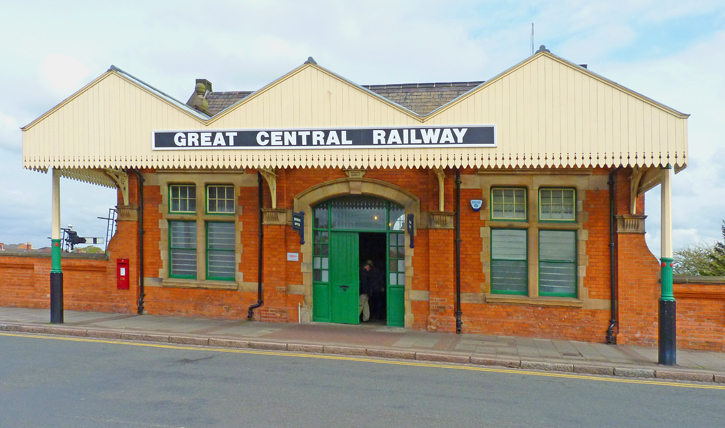
| My Photographs | Links Page |
|
|
GREAT CENTRAL RAILWAY 2015 |
|
The Great Central Railway was born in 1894, although the name did not come into use until 1897. The company began as the Manchester, Sheffield & Lincolnshire Railway, which decided to drive a new line south to London, with a new terminus at Marylebone. This was an ambitious plan, coming so late in the 19th century, when other railways were already running between London and the north of England. Furthermore, with a need to serve major cities on the route, much urban construction stood in the way, and this had to be cleared. As an example, the company had to erect over 300 new houses to replace those demolished, in building Nottingham Victoria station alone. They planned to recoup the enormous outlay by running expresses faster than the competitors. To facilitate this, the line had no gradient steeper than 1 in 176, and no curve of less than one mile radius. This required major engineering constructions, such as the one and a half mile long Catesby Tunnel, and the 23-span viaduct over the Ouse Valley at Brackley. It took four years to build the line and cost over eleven million Pounds - about 600 million in today's money. Services began in 1899. The railway was a success, but in 1923 it became part of the LNER under the grouping scheme, so the GCR lasted only 24 years under that name. In 1948 it became part of British Railways, and under the rationalisation of the railways in the mid-1960s, this line was seen as a duplication, and was closed north of Aylesbury in September 1966. In the mid-1970s, Great Central Railway (1976) Ltd was formed to raise funds through the sale of shares. This
was only partially successful and just the single track line from Loughborough to Rothley was saved with Charnwood Borough Council coming to the rescue by purchasing the land from Loughborough Central to Belgrave & Birstall. These photographs were taken on 2 May 2015. |

The outside of the restored Loughborough Station, which opened in
1899.
The platforms are below road level, so the station does not appear imposing from
the street.
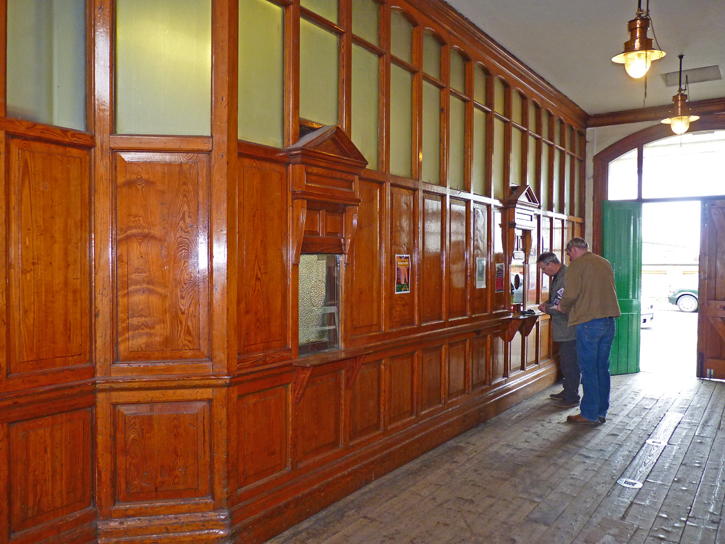
The booking hall of Loughborough Station is nicely restored, with plenty of wood paneling.
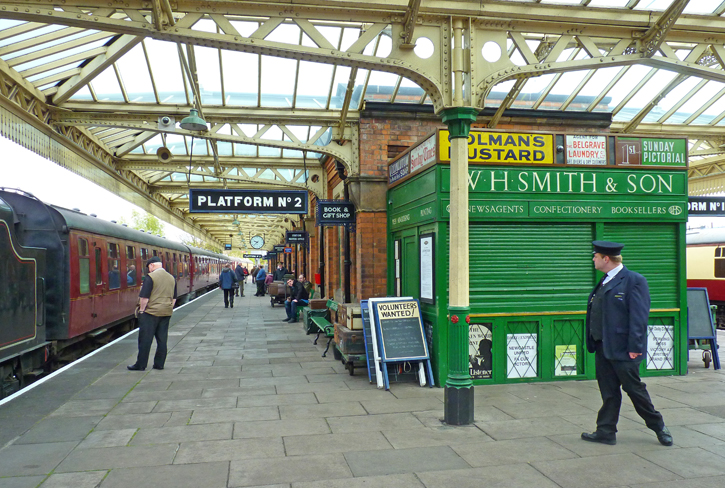
Platform 2 at Loughborough station, from which all services were departing.
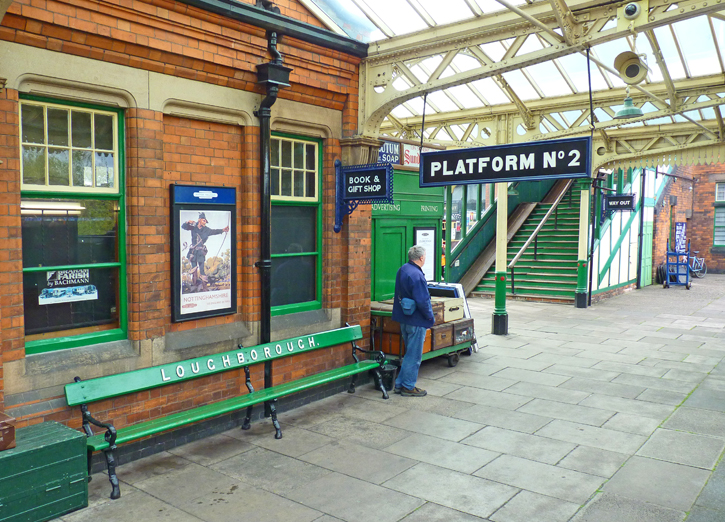
Another view of Platform 2 at Loughborough station.
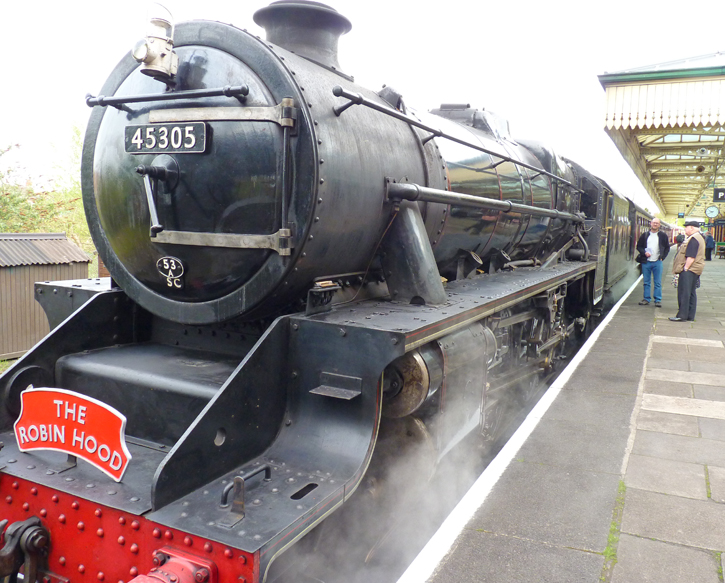
45305 is one of the 842 "Black 5" Stanier
locomotives built for the LMS from 1934 and into Nationalisation.
This is a 4-6-0 locomotive, and was built in 1937 by the Armstrong Whitworth
company.
It has been recently restored and only began working on the GCR in February
2015.
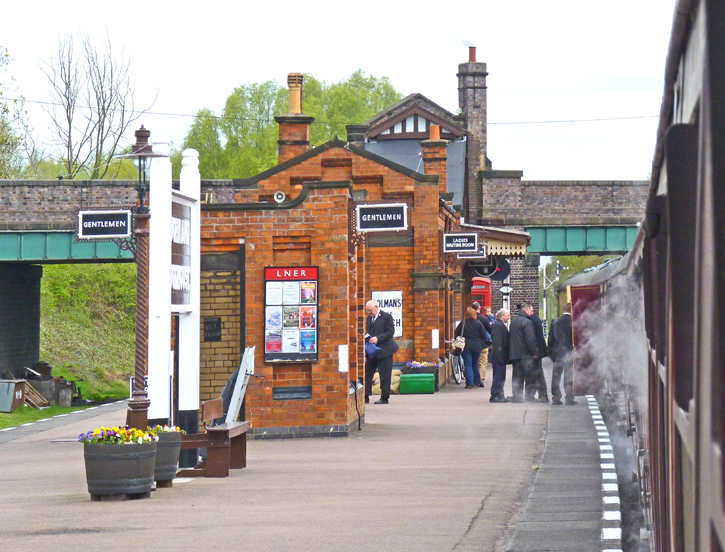
This is the station at Quorn & Woodhouse. Opened
with the line, the buildings are typical GCR in Leicestershire.
The station has been well restored with period signage. Note that the road
bridge over is steel girder with brick parapet.
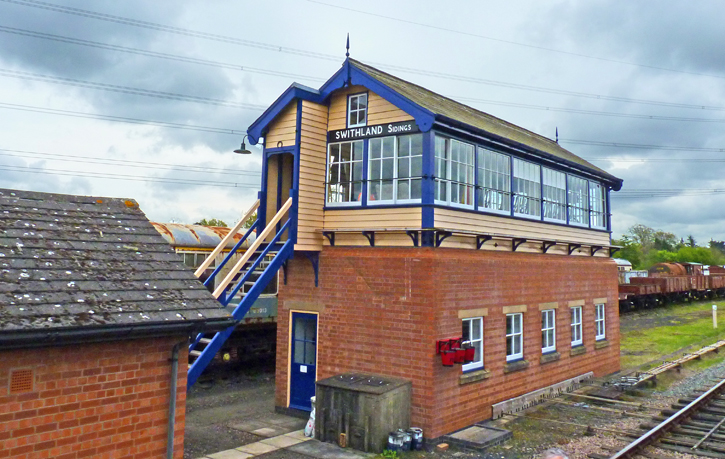
The signalbox at Swithland Sidings is situated on the Up side of the line (the original box was in a similar position
but on the Down side of the line). The box was originally located at Aylesbury South and is a
GWR box of 1905 vintage.
The structure has a wooden top section which has been erected on a new brickwork lower section.
The box controls the sidings and Mountsorrel branch.
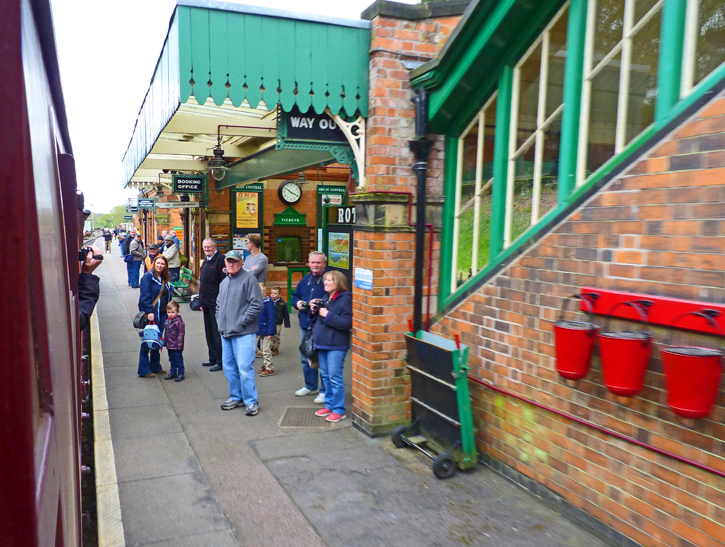
Entering Rothley station.
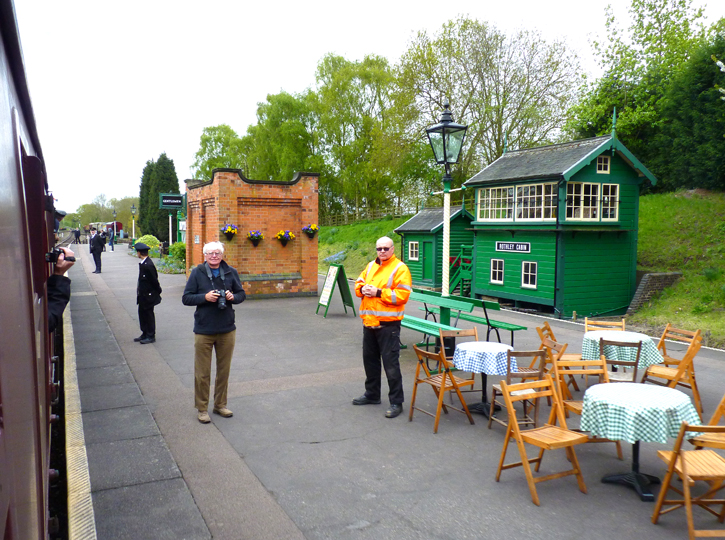
The platform at Rothley has an outside refreshments area.
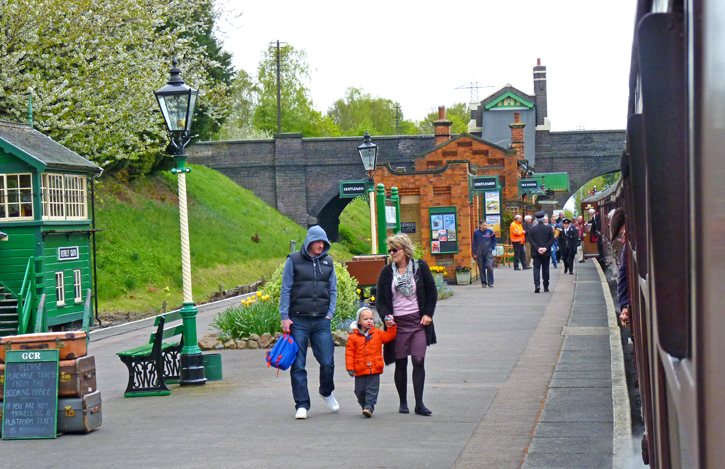
Looking back along the platform at Rothley.
Note the road over bridge which is brick arch rather than the steel girder at
the previous station.
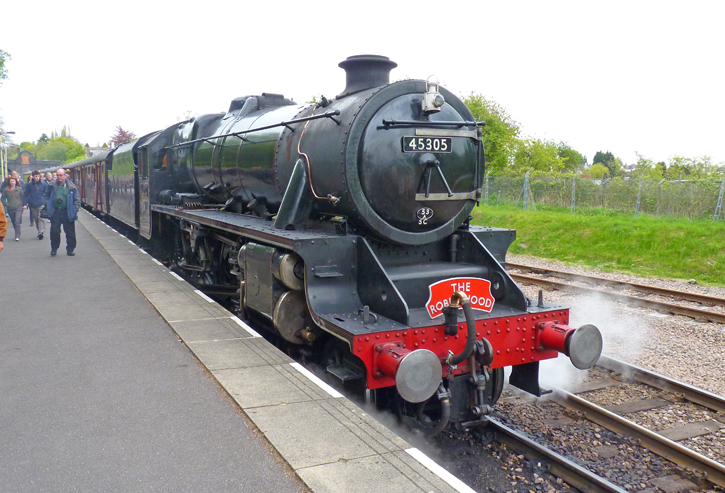
45305 arrives at Leicester North station.
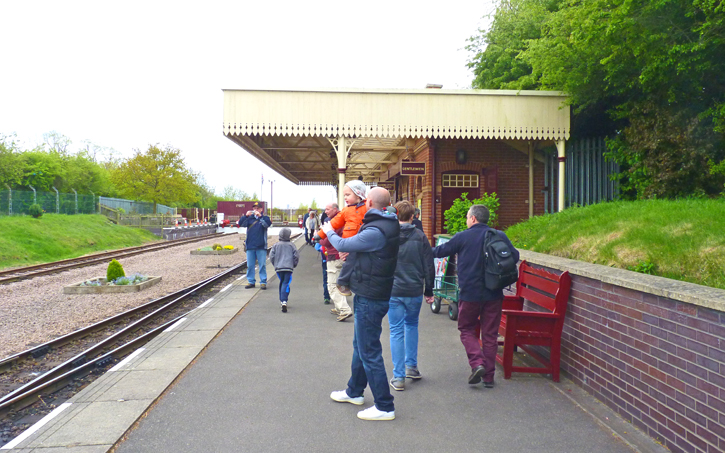
Leicester North station was built by the volunteers as the
southern terminus of the line.
Although basic, there are facilities for passengers including a refreshments bar
and book shop.
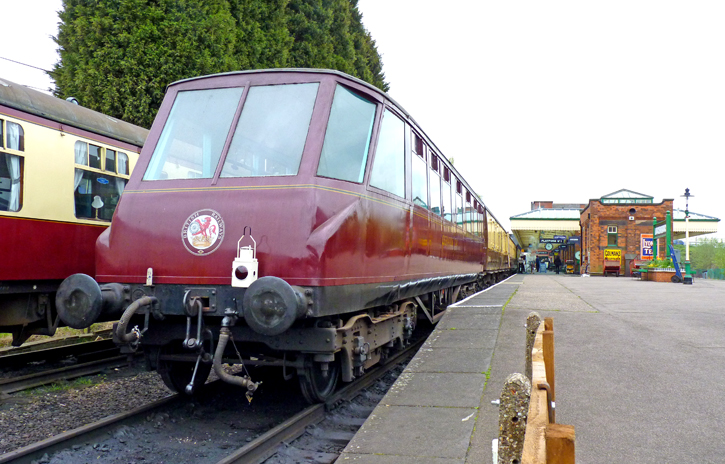
The 'Beavertail' is one of two observation cars built at Doncaster in 1937 for the "Coronation" high speed train
services between London and Edinburgh. It only ran for two years before the war.
It was then stored until 1948,
when it returned to service. Now restored, it runs on special services on
the GCR, and is seen here at Loughborough.
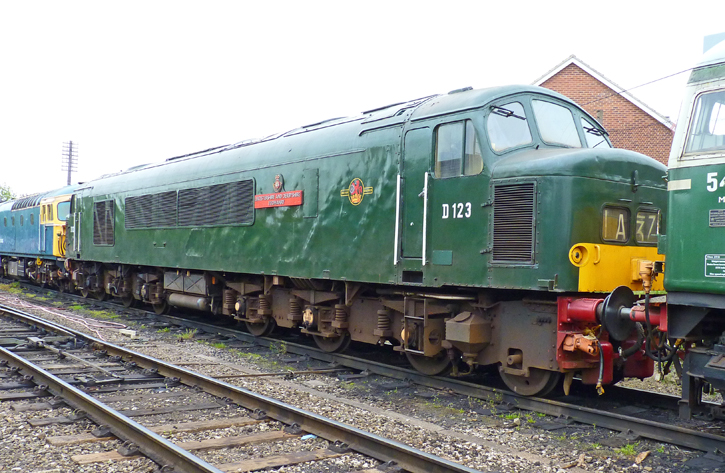
D 123 is a Class 45 diesel-electric locomotive, and is one of
126 built between 1960 and 1962 at the British Railways
works at Crewe and Derby. Intended for express passenger work, they
were fitted with Sulzer 12 cylinder 12LDA28B
engines uprated to 2500 hp. Many were named after English and Welsh peaks and
they became known as “Peaks”.
This loco was withdrawn from service in 1987 and purchased for restoration in
1991. In 2000 at Loughborough Central
it was named “Leicestershire and Derbyshire Yeomanry”, and has since hauled passenger services
on the GCR.
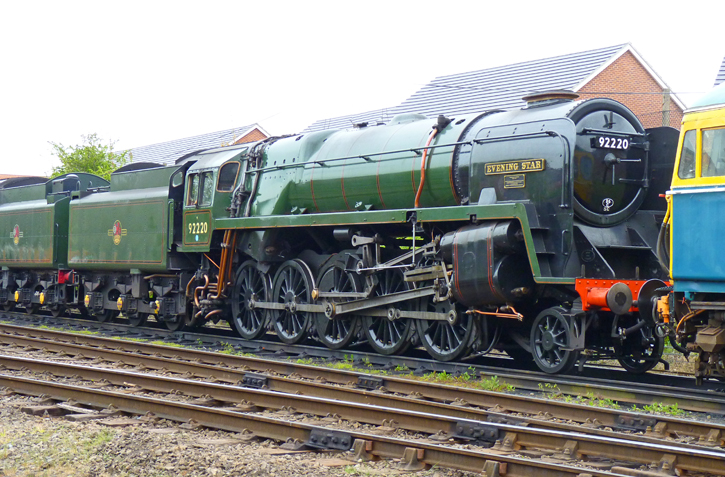
92220 "Evening Star" 9F was the last steam
locomotive to be constructed by British Railways. Built at Swindon
in 1960, she was withdrawn in 1965 following an accident. By 1968, all
steam locomotion had ceased on BR,
and 92220 never returned to active service. Its place in railway
history ensured that it was preserved, and
it has spent time at the National Rail Museum, York, and at "Steam",
Swindon.
As there are no plans for the loco to return to steam, it was agreed that sister
9F No 92214 on the GCR will take
on the identity of her famous classmate No.92220 ‘Evening Star’, with new
name plates cast in brass.
| My Photographs | Links Page |
© Copyright M J Smith, 2015
No photographs to be reproduced elsewhere without permission.